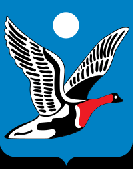How to reach us
117 Uritskogo Str.
Krasnoyarsk, RUSSIA
- e-mail:
- info@sayanring.com
- Open hours:
- Monday-Friday 10 am-7 pm
- Sat 11 am - 4 pm
- Sun - day off
Taymyr Peninsula
General info
How to get

The territory of North Siberian Lowland has rich deposits of oil, natural gas and coal. Norilsk City, part of the five most northern cities in the world, with a population of about 176 thousands people, is a mining and metallurgical center working with the local copper-nickel sulfide minerals.
The highest point is located in the mountains Byrranga (altitude up to 1125 meters).
The largest rivers of Taymyr: Pyasina, Upper and Lower Taymyra, Khatanga.
The largest lakes: Taymyr, Portnyagino, Kungasalah, Labas, Kokora.
The largest city of Taymyr - Norilsk.
There is no doubt that the terrain of the peninsula was once a seabed. Researcher Middendorf found near the river Lower Taymyra a sea shell, now living in the Arctic Ocean.
There are several hypotheses for the origin of the toponym "Taimyr". The most common version is from Evenk word "Tamura" ("precious, expensive, rich") – so Evenk people called the river Taymyr, teemed with fish. There are other options, for example, a Dolgan word "tuoy muora" - "salt-marsh lake", figuratively "grace", because salt was necessary for the life of deers. Or a Dolgan word "Tymyr" - "a blood vessel". A Nenets word "tie myarey" - "bald" (compared with low-growing tundra).
Taymyr Peninsula is located in the Arctic and Subarctic areas in the permafrost zone, which determines the extreme severity of the local climate. Taymyr is characterized by long cold winters with temperatures up to -62 C and short cool summers. A frequent phenomenon is a blizzard, sometimes lasting up to several weeks. Almost always strong winds blow.
In Taymyr complete their life many Atlantic cyclones, making the region is often called the graveyard of cyclones.
The flora of Taymyr is tundra in the north and forest tundra in the south. 300-350 meters above sea level you will meet the mountain tundra. The grass cover of northern Taymyr is quite poor, but in the south the grass grows abundantly. In the forest tundra large areas covered with lichens, including moss, which is the main food of reindeer, as well as scrubs.
Woody vegetation on the Taymyr Peninsula goes as far north as anywhere on the Earth, to nearly 73 degrees N (near the river Khatanga): larch, spruce and birch. Trees in the forest tundra have oppressed form ("crooked"), many trees have dried tops, many of them are huddled to the ground.
The fauna of Taymyr is represented by different types of animals (weasel, wolverine, sable, polar fox, on the coast - a polar bear), birds (geese, ducks, loons, cormorants, white partridge, polar owls, falcons, etc.), fish (whitefish, sturgeon, grayling, trout and others). It is home to reindeer, the number of which reaches about 500 thousand heads, it is the basis of culture of north indigenous people. In seas there are seals, sea hares, walrus and beluga dolphins.
Due to the harsh climate Taymyr has remained uninhabited for a long time. The first people came here from the territory of Yakutia in 5-4 centuries BC. They were walking reindeer hunters.
Indigenous people of Taimyr are Nganasan, Enets, Nenets, Evenk and Dolgan. By 2015, the population density on the Taymyr Peninsula was about 1 person per 10 km2. They were formed on the Taymyr Peninsula in the second half of 17 - early 18 centuries. In the summer reindeers migrate deep into the tundra of the Taymyr Peninsula, in the winter they put their skin tents on the northern border of the Siberian taiga.
In the 16 century, rare daredevils came to the peninsula for furs. In 1667, on the northern Yenisey a settlement of Dudinka was founded. During the Great Northern Expedition in 1736 the east coast of the peninsula from the Khatanga Gulf to Faddey Bay was investigated. In the years 1739-1741 the first geographical study and description of Taimyr was made by Khariton Laptev. He made the first and a fairly accurate map of the peninsula. In 1741 Semen Chelyuskin continued to study of the east coast and in 1742 opened the extreme northern point of Taymyr – a cape, which later received his name - Cape Chelyuskin.
On the peninsula there are three reserves: Big Arctic (the largest in Eurasia), Putorana and Taymyr reserve (consists of 4 sections). The main purpose of the Taymyr Reserve is to preserve and study of natural lowland and mountain tundra ecosystems in the main territory of the tundra and the world's northernmost forests. Particular attention was also paid to the protection of Russian endemic - Red-breasted Goose and the world's largest Taymyr population of wild reindeer.
Please note, that Taymyr is a closed are for foreign tourists, the Russian Security Service requires a special permission to enter Norilsk and Dudinka, all foreigners must apply in advance, better in 40 days before arrival. To enter reserved areas you need another special permission. Take care about it.











